![]() Published in Iran - Social interactions and entertainment - 20 Mar 2017 05:06 - 24
Published in Iran - Social interactions and entertainment - 20 Mar 2017 05:06 - 24
Nowruz (Persian: نوروز Nowruz; ; literally "New Day") is the name of the Iranian New Year, also known as the Persian New Year, which is celebrated worldwide by the Iranian peoples, along with some other ethno-linguistic groups, as the beginning of the New Year.
It has been celebrated for over 3,000 years in Western Asia, Central Asia, the Caucasus, the Black Sea Basin and the Balkans. It marks the first day of the first month (Farvardin) in the Iranian calendar.
Nowruz is the day of the vernal equinox, and marks the beginning of spring in the Northern Hemisphere. It usually occurs on 21 March or the previous or following day, depending on where it is observed. The moment the sun crosses the celestial equator and equalizes night and day is calculated exactly every year, and families gather together to observe the rituals.
Although having Iranian and religious Zoroastrian origins, Nowruz has been celebrated by people from diverse ethno-linguistic communities for thousands of years. It is a secular holiday for most celebrants that is enjoyed by people of several different faiths, but remains a holy day for Zoroastrians.
Locality
The festival of Nowruz is celebrated by many groups of people in the Black Sea basin, the Balkans, the Caucasus, Western Asia, central and southern Asia, and by Iranians worldwide.
Countries that have Nowruz as a public holiday include:
Afghanistan (21 March)
Albania (22 March)
Azerbaijan (20 March to 26 March, total of seven days)
Georgia (country)
Iran(20 March to 24 March, total of five days in general and total of 14 days for schools and universities)
Iraq(de jure in Iraqi Kurdistan Iraqi Kurdistan, de facto national) (21 March)
Kazakhstan(21 March to 24 March, total of four days)
Kosovo(21 March)
Kyrgyzstan (21 March)
Bayan-Ölgii, Mongolia (22 March, regional state holiday only)
Tajikistan (20 March to 23 March, total of four days)
Turkmenistan (21 March to 22 March, total of two days)
Uzbekistan (21 March)
The Canadian parliament, on 30 March 2009, by unanimous consent, ped a bill to add Nowruz to the national calendar of Canada.
Nowruz is celebrated by Kurdish people in Iraq and Turkey, as well as by the Parsis in the Indian subcontinent.
Observances
House cleaning and shopping
House cleaning, or shaking the house (خانه تکانی – xane tekāni) as referred to by Persian-speaking Iranians, is commonly observed before the arrival of Nowruz. People start preparing for Nowruz with a major spring-cleaning of their house and the purchase of new clothes to wear for the New Year, as well the purchase of flowers. In particular, the hyacinth and the tulip are lar and conspicuous.
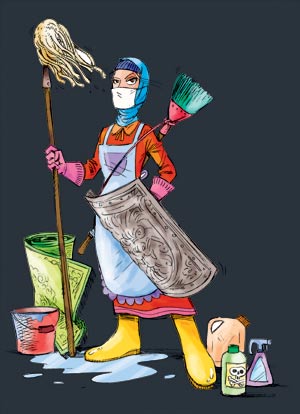

Festival of Charshanbe Suri
Charshanbe Suri (Persian: چارشنبه سوری – Čāršanbe Suri; Kurdish: Çarşema Sor; Azerbaijani: Çərşənbə Bayramı) is a prelude to the New Year. In Iran, it is celebrated on the eve of the last Wednesday before Nowruz. It is usually celebrated in the evening, and is obtained by people making bonfires and jumping over them, as well as setting off fireworks and sparklers.
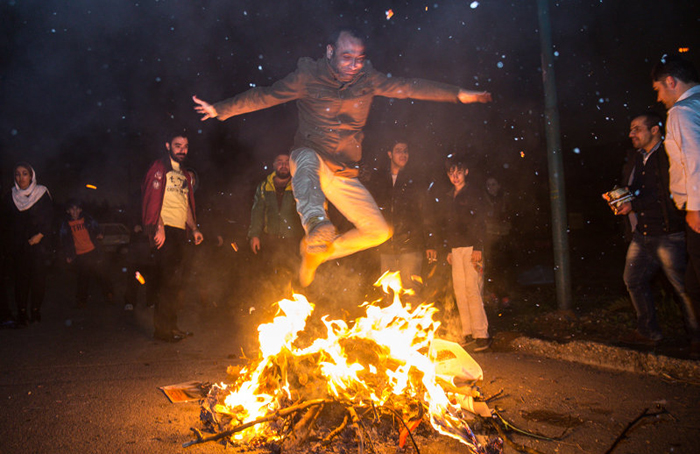

Haft Seen
Haft Seen (Persian: هفت سین – Haft Sin); "Seven S's") is the traditional table setting of Nowruz in Iran. Typically, before the arrival of Nowruz, family members gather around a table, with the Haft Seen set on it, and await the exact moment of the March equinox to celebrate the New Year. At that time, the New Year gifts are exchanged.
The setting includes seven items starting with the letter S or seen (س) in the Perso-Arabic alphabet. The items include:
Greenery (سبزه – sabze): Wheat, barley or lentil sprouts grown in a dish
Samanu (سمنو – samanu): A sweet pudding made from germinated wheat
The dried fruit of the oleaster tree (سنجد – senjed)
Garlic (سیر – sir)
Apples (سیب – sib)
Sumac berries (سماق – somāq)
Vinegar (سرکه – serke)
These items are also known to have astrological correlations to planets Mercury, Venus, Mars, Jupiter, Saturn, Sun and Moon.
Other symbolic items which are usually set along the Haft Seen are candles, a mirror, decorating coins, and decorated eggs (sometimes one for each member of the family). A bowl of water with goldfish, a holy book (e.g. the Avesta or Quran) and/or a poetry book (e.g. the Divan of Hafez), and rose water are also included to the setting.
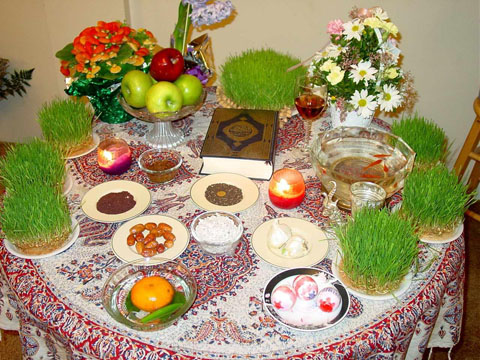
Amu Nowruz and Haji Firuz
In Iran, the traditional heralds of the festival of Nowruz are Amu Nowruz and Haji Firuz, who appear annually in the streets to celebrate the New Year.
Amu Nowruz brings children gifts, much like his Christian counterpart Santa Claus. He is the husband of Nane Sarma, with whom he shares a traditional love story in which they can meet each other only once a year. He is characterized as an elderly silver-haired man who puts on a felt hat, and has a walking stick, a long cloak of blue canvas, a sash, a pair of thin-soled giveh, and a pair of linen trousers.
Haji Firuz, a blackface character clad in bright red clothes and a felt hat, is the companion of Amu Nowruz. He dances through the streets while singing and playing a tambourine. In the traditional songs, he introduces himself as a serf trying to cheer people who he refers to as his lords. As a blackface serf, it is a controversial character, seen as symbolically racist. Therefore, half of his face is sometimes painted white in order to prevent the criticisms.
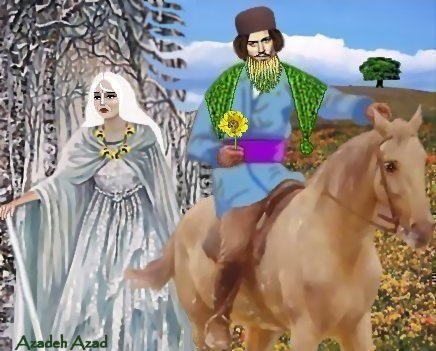
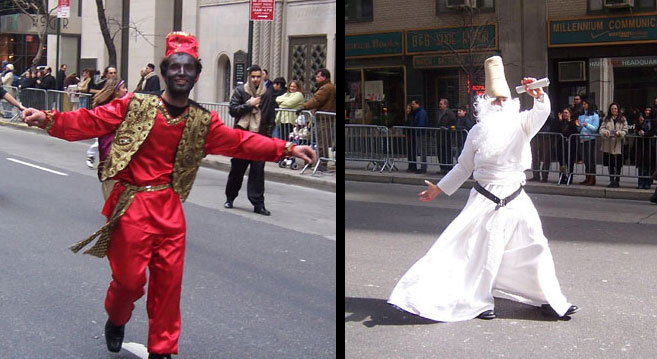
Visiting one another
During the Nowruz holidays, people are expected to visit one another (mostly limited to families, friends and neighbors) in the form of short house visits, which are usually reciprocated. Typically, the youth will visit the elders first, and the elders return their visit later.
In Iran, the visits naturally have to be relatively short, otherwise one will not be able to visit everybody on the list. A typical visit is lesser than 30 minutes, where you often run into other visiting relatives and friends who happen to be paying a visit to the same house at that time.
Because of the house visits, you make sure you have a sufficient supply of pastry, cookies, fresh and dried fruits and mixed nuts on hand, as you typically serve your visitors with these items with tea and other beverages. Many Iranians will throw large Nowruz parties in a central location as a way of dealing with the long distances between groups of friends and family.
Sizdebedar(End of Nowruz)
In Iran, the Nowruz holidays last thirteen days. On the thirteenth day of the New Year, Iranians leave their houses to join nature and picnic outdoors, as part of the Sizdebedar ceremony.
On the day of Sizdebedar, the greenery grown for the Haft Seen setting is thrown away, particularly into a running water. It is also customary for young single people, especially young girls, to tie the leaves of the greenery before discarding it, expressing a wish to find a partner.
Another custom ociated with Sizdebedar is Lie of the Thirteen, which is the process of lying to someone and making them believe it. It has been directly borrowed from April Fools' Day, and has become in vogue in Iran due to its coincidence with the day of the celebration of Sizdebedar.
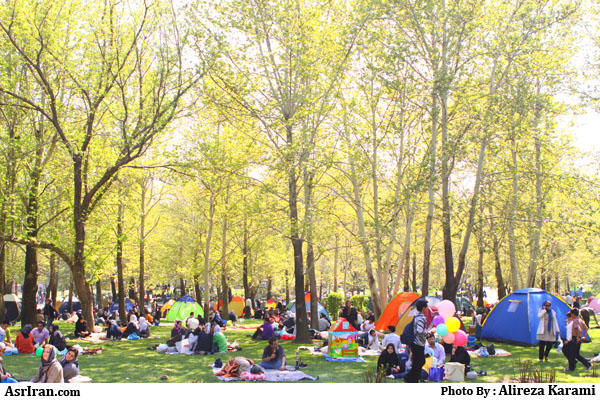
Source
It has been celebrated for over 3,000 years in Western Asia, Central Asia, the Caucasus, the Black Sea Basin and the Balkans. It marks the first day of the first month (Farvardin) in the Iranian calendar.
Nowruz is the day of the vernal equinox, and marks the beginning of spring in the Northern Hemisphere. It usually occurs on 21 March or the previous or following day, depending on where it is observed. The moment the sun crosses the celestial equator and equalizes night and day is calculated exactly every year, and families gather together to observe the rituals.
Although having Iranian and religious Zoroastrian origins, Nowruz has been celebrated by people from diverse ethno-linguistic communities for thousands of years. It is a secular holiday for most celebrants that is enjoyed by people of several different faiths, but remains a holy day for Zoroastrians.
Locality
The festival of Nowruz is celebrated by many groups of people in the Black Sea basin, the Balkans, the Caucasus, Western Asia, central and southern Asia, and by Iranians worldwide.
Countries that have Nowruz as a public holiday include:
Afghanistan (21 March)
Albania (22 March)
Azerbaijan (20 March to 26 March, total of seven days)
Georgia (country)
Iran(20 March to 24 March, total of five days in general and total of 14 days for schools and universities)
Iraq(de jure in Iraqi Kurdistan Iraqi Kurdistan, de facto national) (21 March)
Kazakhstan(21 March to 24 March, total of four days)
Kosovo(21 March)
Kyrgyzstan (21 March)
Bayan-Ölgii, Mongolia (22 March, regional state holiday only)
Tajikistan (20 March to 23 March, total of four days)
Turkmenistan (21 March to 22 March, total of two days)
Uzbekistan (21 March)
The Canadian parliament, on 30 March 2009, by unanimous consent, ped a bill to add Nowruz to the national calendar of Canada.
Nowruz is celebrated by Kurdish people in Iraq and Turkey, as well as by the Parsis in the Indian subcontinent.
Observances
House cleaning and shopping
House cleaning, or shaking the house (خانه تکانی – xane tekāni) as referred to by Persian-speaking Iranians, is commonly observed before the arrival of Nowruz. People start preparing for Nowruz with a major spring-cleaning of their house and the purchase of new clothes to wear for the New Year, as well the purchase of flowers. In particular, the hyacinth and the tulip are lar and conspicuous.


Festival of Charshanbe Suri
Charshanbe Suri (Persian: چارشنبه سوری – Čāršanbe Suri; Kurdish: Çarşema Sor; Azerbaijani: Çərşənbə Bayramı) is a prelude to the New Year. In Iran, it is celebrated on the eve of the last Wednesday before Nowruz. It is usually celebrated in the evening, and is obtained by people making bonfires and jumping over them, as well as setting off fireworks and sparklers.


Haft Seen
Haft Seen (Persian: هفت سین – Haft Sin); "Seven S's") is the traditional table setting of Nowruz in Iran. Typically, before the arrival of Nowruz, family members gather around a table, with the Haft Seen set on it, and await the exact moment of the March equinox to celebrate the New Year. At that time, the New Year gifts are exchanged.
The setting includes seven items starting with the letter S or seen (س) in the Perso-Arabic alphabet. The items include:
Greenery (سبزه – sabze): Wheat, barley or lentil sprouts grown in a dish
Samanu (سمنو – samanu): A sweet pudding made from germinated wheat
The dried fruit of the oleaster tree (سنجد – senjed)
Garlic (سیر – sir)
Apples (سیب – sib)
Sumac berries (سماق – somāq)
Vinegar (سرکه – serke)
These items are also known to have astrological correlations to planets Mercury, Venus, Mars, Jupiter, Saturn, Sun and Moon.
Other symbolic items which are usually set along the Haft Seen are candles, a mirror, decorating coins, and decorated eggs (sometimes one for each member of the family). A bowl of water with goldfish, a holy book (e.g. the Avesta or Quran) and/or a poetry book (e.g. the Divan of Hafez), and rose water are also included to the setting.

Amu Nowruz and Haji Firuz
In Iran, the traditional heralds of the festival of Nowruz are Amu Nowruz and Haji Firuz, who appear annually in the streets to celebrate the New Year.
Amu Nowruz brings children gifts, much like his Christian counterpart Santa Claus. He is the husband of Nane Sarma, with whom he shares a traditional love story in which they can meet each other only once a year. He is characterized as an elderly silver-haired man who puts on a felt hat, and has a walking stick, a long cloak of blue canvas, a sash, a pair of thin-soled giveh, and a pair of linen trousers.
Haji Firuz, a blackface character clad in bright red clothes and a felt hat, is the companion of Amu Nowruz. He dances through the streets while singing and playing a tambourine. In the traditional songs, he introduces himself as a serf trying to cheer people who he refers to as his lords. As a blackface serf, it is a controversial character, seen as symbolically racist. Therefore, half of his face is sometimes painted white in order to prevent the criticisms.


Visiting one another
During the Nowruz holidays, people are expected to visit one another (mostly limited to families, friends and neighbors) in the form of short house visits, which are usually reciprocated. Typically, the youth will visit the elders first, and the elders return their visit later.
In Iran, the visits naturally have to be relatively short, otherwise one will not be able to visit everybody on the list. A typical visit is lesser than 30 minutes, where you often run into other visiting relatives and friends who happen to be paying a visit to the same house at that time.
Because of the house visits, you make sure you have a sufficient supply of pastry, cookies, fresh and dried fruits and mixed nuts on hand, as you typically serve your visitors with these items with tea and other beverages. Many Iranians will throw large Nowruz parties in a central location as a way of dealing with the long distances between groups of friends and family.
Sizdebedar(End of Nowruz)
In Iran, the Nowruz holidays last thirteen days. On the thirteenth day of the New Year, Iranians leave their houses to join nature and picnic outdoors, as part of the Sizdebedar ceremony.
On the day of Sizdebedar, the greenery grown for the Haft Seen setting is thrown away, particularly into a running water. It is also customary for young single people, especially young girls, to tie the leaves of the greenery before discarding it, expressing a wish to find a partner.
Another custom ociated with Sizdebedar is Lie of the Thirteen, which is the process of lying to someone and making them believe it. It has been directly borrowed from April Fools' Day, and has become in vogue in Iran due to its coincidence with the day of the celebration of Sizdebedar.

Source
Support
Last EndLast EndLast EndLast EndLast EndLast EndLast EndhaftvudrezaderazrezaderazrezaderazrezaderazrezaderazMrBl3ndMrBl3ndMrBl3ndEvil SkullEvil SkullBelegurlionelejiRebazartarezzizoArtemisGeneral90no0bsailbotailll3desmondmilessorkhpostFeri_261Evil SkullsamaKavehBusterBusterBustertahat4tt2ParsParsCoGaIranTHEGUYMindhunterTinaxioraczek32ShazdekocholoComments (24)
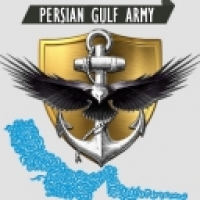
عیدت مبارک
سال خوبی داشته باشی عزیز
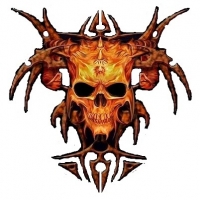
سال نو مبارک

سال نو همه دوستان مبارک، لطفا رای بدید بره جهانی

Happy Nowruz!

Happy Nowruz
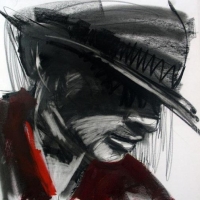
happy Nowruz 

Happy Nowruz

o7
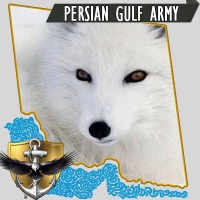
Happy Nowruz
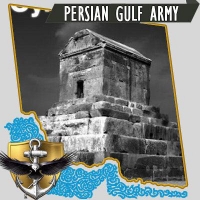
Happy Nowruz

Happy nowruz
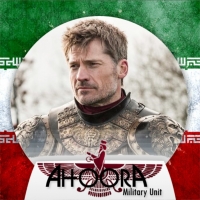
خیلی کار خوبی کردی/عالی بود

happy nowruz to all muslin 

هپینیو یر
بهههههه
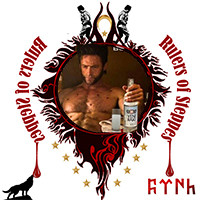
Happy nevruz.

Newroz is a haram and bid ah in the Islam by prophet Muhammad sallallahu ta la alayhi wa sallam. But persians arent inside Islam, we know that it s okay.

سال نو همه دوستان مبارک

@faleminderit shut the fuck up Wahhabi terrorist

Happy nowruz guys ^^

امام صادق (ع) : در هر روز نوروزی، ما آرزوی فرج داریم؛ چرا که آن از روزهای ما و شیعیان ماست. فارسیان، آن را گرامی داشتند و شما اعراب آن را ضایع کردید.

Hastir lan pezo sen kimsin vahabiymia. Ben sunniyim hadis inkarcisi yavsolar
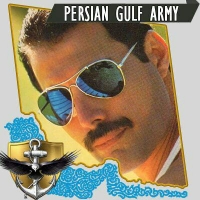
@faleminderit you can back to desert and raid your camel, when your prophet Was born in arabia desert It was 1600 years ago that we did celebration nowruz in iran and now you said a camel raider that even dont have Literacy said nowruz is haram!!!! yes all thing that is Signs of a civilization for your prophet is not good and this is haram!
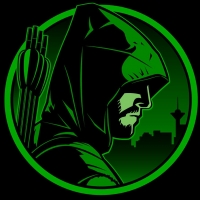
@Faleminderit Please Shut The Fuck Up You Don t know Anything About Islam And Nowruz.
so ,zip It Up...
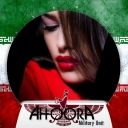
Happy Norouz


